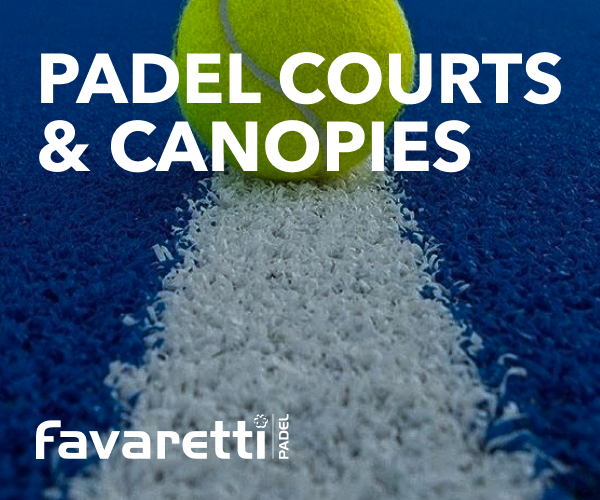Skylab are Elite Performance Analysts, who specialise in looking at sports under the microscope, and producing data to help players, coaches and governing bodies make better decisions. We decided to take our first look at the world’s fastest-growing sport, and where better than at the National Tennis Centre for the FIP Rise London.
Analysing the FIP Rise London
The incredibly successful maiden FIP Rise London was held at the National Tennis Centre in London last month, with the women’s title won by Tia Norton and Carla Fernandez, and the men’s title won by Bram Meijer and Sten Richters. The tournament saw a full men’s 32 main draw with a full men’s 32 qualification draw too; the women’s side saw 16 pairs playing for the title.
Fascinated by the details and intricacies of sport, and with professional padel now making its way to the UK, we wanted to dive into the numbers of the London Rise finals to uncover the expected and unexpected trends of the game.
Getting going
As we expected, all players served a high percentage of First Serves in across both finals, ranging from 84-96% First Serves In and with no double faults. For the women’s match, the points won behind First Serve were significantly different between the winning and losing teams; Fernandez/Norton won 75% behind their First Serve, whilst Betz/Garcia won 39% behind theirs. On the men’s side, however, Meijer/Richters won 72% First Serve points and Blanque/Casas won 73% First Serve points. For the men, this is what we expect to see based on research by Sanchez-Alcaraz et al [1], who studied the 2019 WPT Masters Finals. At the Masters, the men’s pairs won 62.5% of points behind their First Serve and in the women’s game, the average is 48.5%, showing the dominance of Fernandez/Norton in their final to outperform this norm.
When looking at serve direction, there was a mix of patterns across all eight finalists. Betz and Garcia both had the greater variation across Side Wall, Middle and T serves, yet saw low consistency on where they won their points. On the other hand, Fernandez and Norton had a preference to serve to the Side Wall on both Deuce and Ad court, between 62-90% of the time, and won between 57-91% of their Side Wall serves too, showing strength in their serve tactics.

The men’s pairs showed similarity in their serve direction, opting to serve specifically to the Side Wall 63-92% of the time across all four players, or down-the-T 5-25% of their serves for Blanque, Casas and Meijer (Richters was an outlier, serving 73% to the T on Deuce court), winning 67-92% of First Serve points behind them. This aligns with the research by Sanchez-Alcaraz et al [1], whereby players at the Masters Finals served 58% to the Deuce Side Wall and 70% to the Ad court Wall; more frequently compared to 34% down the T on the Deuce court and 19% to the T on the Ad court. Despite the strength in numbers of points won, it also shows the predictability of players and their serve pattern. This may be an area of consideration for Padel players in the future, to increase the variation of serve direction to avoid the returner anticipating, and in turn, strengthens the favoured serve patterns when serving on pressure points.
From a returner’s perspective, the lob return is common tactic used to pin the serving team back so they can approach the net to gain the advantage. In the research by Sanchez-Alcaraz et al [1] they highlighted how this happens more frequently in the women’s game, accounting for 46% of returns compared to the men’s 36%. The paper suggests that as the men smash more often, the lob return is avoided to prevent setting up the opponent. A more defensive approach is taken by the women, and we saw this in the London Rise finals too, whereby the men hit lob returns 16% of the time, compared to the women’s much higher 42%.
Staying in the point
The Analysis of Serve & Return Strategies [1] states that the percentage of points won decreases with each shot for servers, with the server advantage being lost at 12 shots for men and 7 shots for women. It’s clear that whilst factors like serve direction are important for starting the point strong, Padel points are not won with an Ace or Return Error. Interestingly, it is generally accepted that Padel is a game with long rallies, yet the data from our two finals in London paint a different picture.
Compared to similar racket sports such as Tennis and Squash, the London Rise finals sat in-between both for the average rally length. Tennis sees a median rally length of 4 shots and Squash is 12 shots for men and 8 shots for women. In London we saw a median of 7 shots in the men’s final and 6 shots in the women’s final. Furthermore, only 35% of points in the women’s final exceeded a 7 shot rally, and 35% of points in the men’s final exceeded a 9 shot rally.

Consistency of staying in the point on longer rallies can be pivotal though. The men’s match was determined by a few key points, in particular a first-set tiebreaker, and just one break of serve in the match at 2-3 in the second set. Both points played highlight the important of staying in the point and controlling the net. Richters stated in The Padel Paper about the pairs tactics of ‘going Dutch’, and this was seen in the key moments as Meijer/Richters played offensively from the off, using clinical lobs to control the net early in what became a lengthy battle over these two pressure points (a 26 shot rally in the tiebreak and an 18 shot rally in the second set at 2-3), leading to a smash to finish and take the first set and the break in the second.
Across the match, short rallies were matched as Blanque/Casas and Meijer/Richters both won 32 points in rallies less than or equal to 7 shots, yet Meijer/Richters won just 4 more rallies in those points lasting longer than 7 shots (32 points vs 28 points) – a deciding factor in taking the title.
Winners & Errors
The finals highlighted the expected outcome of how Padel points finish, with 60% of points ending in an error. Of all points ending in a winner, 70% of them were with a smash in the men’s final, and 65% with a smash in the women’s final. This data is seen in the research by Sanchez-Alcaraz et al [2] that showed that the flat/topspin smash is the most effective smash used to win a point in Padel, although the efficiency decreases significantly as players move away from the net, especially with the flat smash.
With the errors accounting for a larger proportion of how a point ends, we looked at a breakdown of what errors were made. Of the 69 errors in the men’s final, 25% hit the back glass, 42% went into the net and 6% hit the side fence/glass, as seen in the images below. The remaining 27% of errors were an accumulation of pick-ups, rebounds, and groundstrokes. In the women’s final we see similar numbers. Of the 52 errors made, 27% hit the back glass, 52% hit the net and 7% hit the side fence/glass. Pick-ups, rebounds, and groundstrokes made up the final 14% of errors.


The future
The London Rise final showcased professional Padel in the best light possible with a fantastic competition and venue, plus a high-quality field. This is shown in the stats too, as both finals matched and, in some cases, exceeded the norms of the upper echelons of the World Padel Tour. These are exciting times for Pro Padel in the UK to grow the sport across participation and performance, and we can’t wait to see what comes next!
Skylab: Elite Performance Analysis are specialists in sports Performance Analysis. We’ve worked across multiple sports for over 15 years from tennis, football and rugby to the more niche snowsports, watersports and cycling. We support players, coaches and organisations by leveraging video and data to allow them to make better decisions in sport. If you’d like to learn more, reach out to us at hello@skylab.com.
Research Papers
[1]Sanchez-Alcaraz et al (2020); Analysis of Serve and Serve-Return Strategies in Elite Male and Female Padel
[2]Sanchez-Alcaraz et al (2020); Analysis of Performance Parameters of the Smash in Males and Female Professional Padel
[3] Courel-Ibanez et al (2017); Game Performance and Length of Rally in Professional Padel Players
[4] Ramon-Llin et al (2020); Stroke Analysis in Padel According to Match Outcome and Game Side on Court









































